Contents
World history is full of leaders who inspired many commanders after them. For example, we know that great commanders such as Genghis Khan and Alexander the Great were taken as examples by leaders such as Napoleon and Hitler. Such leaders changed the course of history and caused great events that were remembered by their names even centuries after them. Attila the Hun, the ruler of the European Hun Empire, was such a great commander who left his mark and mark on history.
During his period, the borders of his state constantly increased and his country never lacked abundance and prosperity. In addition, although we do not have detailed information about the period in which he lived, it is believed that this great commander caused the collapse of the Western Roman Empire, one of the most powerful states of the period, due to his expeditions. For similar reasons, Europeans called him “The Scourge of God”.
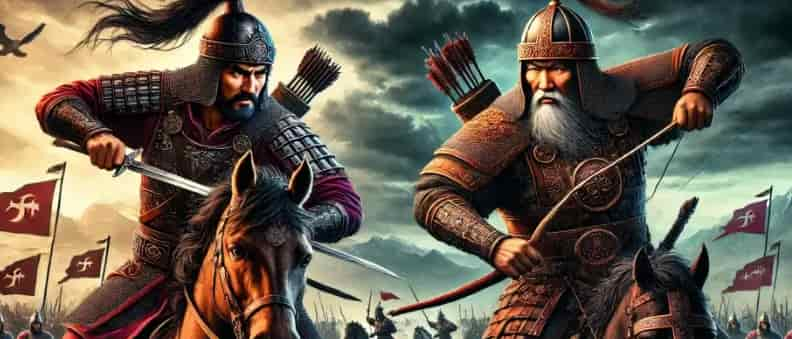
Who Was Attila the Hun? A Brief Overview
Although there is no documentation regarding the years he was born and his early youth, historians agree that he received a good education. On the other hand, according to some historians, this man is ruthless and cruel, while according to others, he is a very good and helpful leader. That is why, as in almost every historical subject, the perspective from which you look at history regarding Attila and his life is important. Now, we will examine and analyse issues related to his life, legacy and mentality.
After the Great Hun State, one of the most powerful states in history, collapsed, the Huns faced great pressure from the Chinese. So much so that the majority of their population either died or assimilated over time and became Chinese. A small group that remained from them migrated eastwards from 375 AD and moved towards Eastern Europe via the Caucasus. This movement did not take place in a single day or a single year.
In other words, the journey to the east and Europe is the name of a certain process. So much so that the effect of this powerful movement caused the Migration of Tribes that ended the first age in history and started the middle age. In addition to these, the European Huns, who were leaders before Attila the Hun such as Balamir and Uldız, defeated the settled peoples such as the Alans and Visigoths in the lands they came to and caused them to migrate towards Western Rome. All these raids had weakening effects on Western and Eastern Rome.
The European Huns were quite advanced compared to other states both militarily and politically in their own time. In other words, although they were a nomadic society, they had a political and military organization as strong as a settled state.
The Hun State of Europe Before Attila
Each of their members received equestrian training when they were still young children, ate their meals on horseback and often slept on horseback. Naturally, thanks to their harmony with their horses while fighting, they could shoot arrows very easily and prevailed over their enemies. In addition to these, they had a serious cavalry unit and war tactics and discipline.
What we can finally say about the Hun State of Europe before Attila the Hun can be listed as follows:
- They settled in Eastern Europe and are now becoming a settled society.
- Their political and military organization is complete.
- Their leaders are also very strong and have high diplomatic intelligence.
- They established diplomatic and military relations with Eastern and Western Rome and started to collect taxes with the raids they carried out.
- The state was already established on strong foundations. In other words, the Attila period, which would leave great marks on Europe, is a natural result of the structure that came before him as much as his superior talents.
Attila’s Rise to Power and Leadership of the Huns
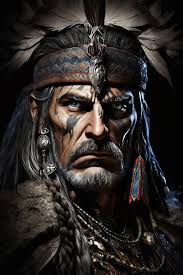
It is quite difficult to find written sources about his origins and childhood. Although it is highly probable that he was a Turk, Visigoth or German according to Germanic and Chinese sources of the period, historians widely believe that he had Turkish roots. His name is derived from the roots Att and Illa, meaning “great ancestor”. His date of birth is also one of the most controversial issues. According to historians, Attila the Hun was born between 395 and 415 AD in the region called Pannonia within the borders of today’s Hungary.
In other words, before he was born, the Huns had already entered the borders of Europe during the time of his uncles Rua and Oktar, who ruled the state.
In the state tradition of that period, the eldest sibling was the ruler. For this reason, instead of his father Muncuk, his older brothers Rua and Oktar ruled the state together. In this way, a dual administration system was seen at that time. According to legend, after his father died, his uncle Rua found him when he was about to die and took him in and raised him. Since he was a member of the ruling family, he received a very good education for his time and also learned Greek and Latin. In 434, after the death of his uncle Rua, his older brother Bleda ascended to the throne according to state traditions.
However, Bleda, who was more gentle and conducted diplomatic affairs, handed over military and political affairs to Attila over time. Although some historians claim that there was a conflict or throne fight between the two brothers over time, there is no evidence or document about this.
Treaty of Margus and The Huns
In 435, Attila and Bleda, who even crossed the Danube River with his older brother and organized the first Balkan Campaign to the Eastern Roman Empire, signed the famous Treaty of Margus here. One of the most well-known features of this treaty in history is that he never got off his horse, but negotiated and signed with the Eastern Romans on horseback.
The articles of the Treaty of Margus are as follows:
- Eastern Rome will return the fugitives of the Hun ruling family who took refuge with it.
- The Romans will agree to double the amount of gold tribute they used to pay.
- Rome will not cooperate with any enemies of the Huns.
- They will also pay the Huns 8 pounds of gold for the return of each Roman captive.
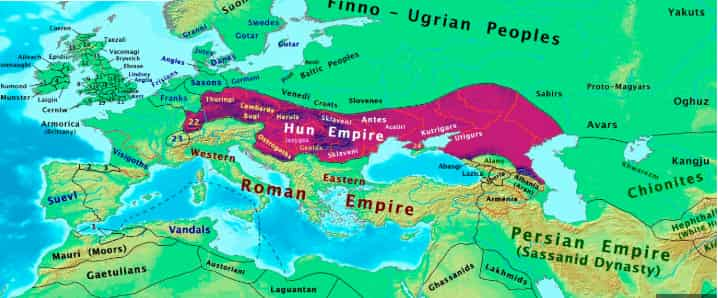
Attila vs. the Roman Empire: Key Battles and Conflicts
Attila the Hun, who maintained good relations with Western Rome during his uncle’s reign, even provided military support to the Westerners against the attacks of Eastern Rome from time to time. He himself organized his raids mainly towards Eastern Rome at the beginning of his reign. After the sudden and unprovoked death of his older brother Bleda, according to historians, he assumed sole power in 445. He also closely followed the moves of Theodosius, who took the opportunity of his withdrawal to the center after the Treaty of Margus and built walls on his borders.
In this context, Attila the Hun, who went on his second Balkan campaign in 445, took advantage of the situation of Istanbul and Thrace, which was destroyed by a heavy earthquake at that time, and came to the outskirts of Istanbul. At this point, peace negotiations began and Theodosius was forced to accept very harsh conditions.
As we have mentioned before, the relations of the European Huns with Western Rome were quite good. On the other hand, by 450, serious tensions arose between Western Rome, which was worn out due to throne struggles, and Attila. Thereupon, he wanted to marry the emperor’s sister and demanded Gaul as a dowry from the new ruler. Most historians claim that this demand was an excuse to attack Western Rome.
Naturally, this demand was not accepted by them and He launched a direct attack on the Western Roman for the first time. This attack and the Italian campaign also ignited the process that would make him go down in history as the “The Scourge of God”. By the way, according to a Western legend, Attila the Hunfound the “sword of Ares“, the god of war, and because of this he became an invincible warrior.
The Fearsome Reputation of Attila the Hun
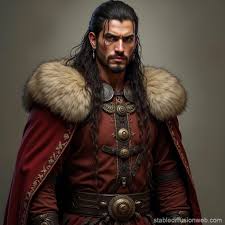
If we leave the legends aside, Attila the Hun came to the interior of today’s Italy, France, Germany and Europe during this period. Some historians claim that he burned and destroyed many places here.
The real reason why he is still a nightmare for Europeans today is that he conquered almost all of Europe. His greatest talent was that he first implemented the concept of “siege warfare”, which did not exist before him, into his army.
On the other hand, according to historians, his next battle, the Battle of Catalonia, was a failure for him. In this battle in 451, although he suffered heavy losses and was not completely defeated, he was forced to retreat.
Attila’s Death and the Decline of the Hunnic Empire
His expedition to Italy a year after this war surprised his enemies. According to them, He would not be able to recover for a long time after the Catalan War. This agility and the rapid reinforcement of his army would almost enable him to conquer Italy and Western Rome.
Although there is no evidence, some historians claim that in 451, when Western Rome was about to be conquered, the Pope of the time held a special tent meeting with Attila the Hun and even kissed his hand and asked for forgiveness. Exactly at this time, extreme drought and famine allowed him to return with great booty and as a victorious commander.
At that time, all of Europe was trembling with fear of the Hun and Attila and cursing him. The Hun commander, who planned to attack Marcianus, who ascended to the throne the following year, gave the order to his army to prepare long beforehand. Some historians claim that his ultimate goal this time was to completely capture the city of Constantinople. This city, which had high and strong walls for its time, was the target of every powerful commander.
It is said that he died in 453, after drinking heavily during an evening celebration of his marriage to his new wife Ildiko, with blood coming out of his nose. In contrast, some Byzantine historians claim that his wife Ildiko secretly stabbed him to death. There is no historical record or document regarding these claims.
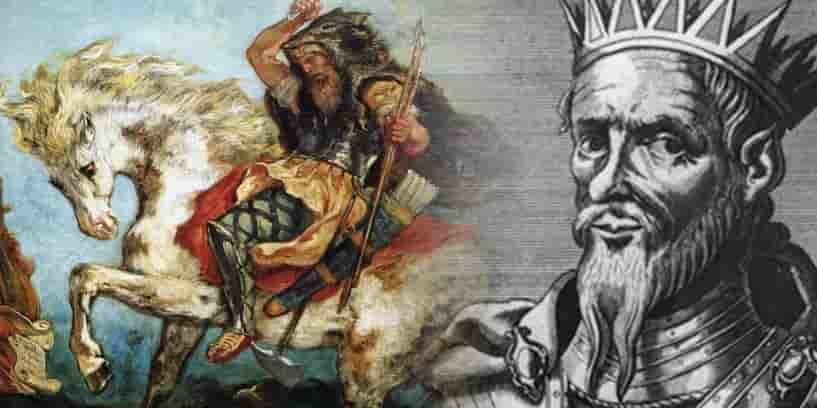
Summary of Interesting Facts About Attila the Hun
If we consider that the reign of Attila the Hun lasted approximately 20 years, it is possible to list the issues related to him as follows:
- 1- He brought the powerful state structure and borders before him to the peak.
- 2- He strengthened the archer cavalry units and developed them by teaching them siege warfare.
- 3- He entered the interior of Europe with the Treaty of Margus, the First and Second Balkan campaigns and Italy.
- 4- The Battle of Catalonia is known as the only war in which he failed or was defeated.
- 5- He became the “Whip of God” with the Italy Campaign and his subsequent march into Europe.
